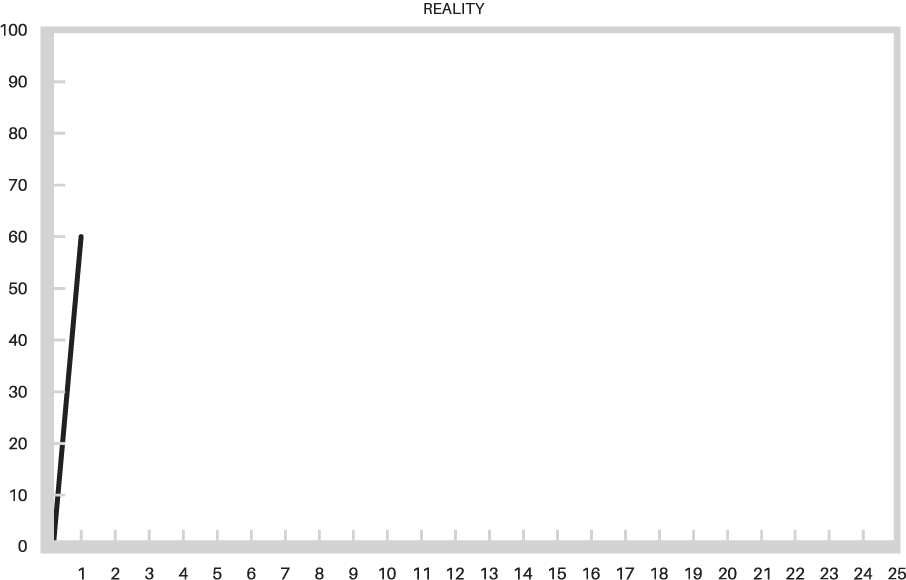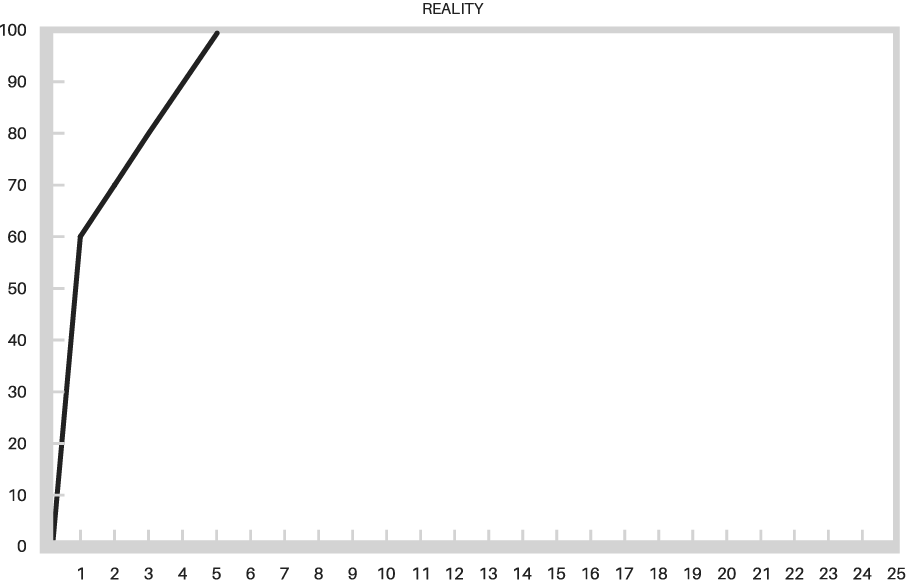In 1995, I worked for a company that sold an air freshener that plugged into the wall. The product worked for 45 days. That is a fact. However, consumers claimed they could only smell the fragrance for 21 days. All the attempts at solving the issue only proved the product did produce a fragrance after 45 days that could be smelled by people visiting the consumers' homes AND the consumers insisted they couldn't smell it. The issue involves adaptation and habituation.
ADAPTATION: Twenty-one minutes after you enter a static environment, you can no longer smell the surroundings during that encounter.
HABITUATION: After twenty-one days of continually entering a static environment on a daily basis, you can no longer smell the surroundings in any future encounters.
All the resources given to me to solve the problem stated our sense of smell has two purposes: detect a predator and find a mate. However, animals don't "suffer" from adaptation or habituation. None of this helped in solving the problem.
I decided to come up with a model for how the human nose and human brain are connected, and it led to some interesting stories. For instance, one person complained they could no longer smell the product in their kitchen. We asked her to move it to her living room. "My living room is bigger than my kitchen and the product is dead. Do you really think I'm going to smell it again?" But she did move it. Guess what happened when we called her back in two days? She could smell it again.
What is going on inside that person's brain?
It took me eleven models to solve the problem. Here is an example to explain part of the phenomenon:
Imagine a man goes to pick up a woman for their first date and there are plants containing lilacs around her front door. This aroma and its location will be filed away in his brain.
Most pleasant aromas have at least seven unique smells, which are called "notes" or "accords." We only pick up four accords the first time we smell anything. When his brain files away this aroma profile, the information in his brain will be lacking from reality, both in strength and character.
Strength: Since the full effect of the aroma is not comprehended, the person will only experience the EFFECT of 60% of the aroma strength on Day One.

Character: Since the person will only experience the EFFECT of four of the accords, the profile filed away is something less.
Let's say the true aroma "fingerprint" has eight accords and is represented by: 8-7-6-5-4-3-2-1. Accord #1 is the lilac smell, and it is at strength 8, while Accord #8 is the mossy note, and it is at strength 1. Even though the person FACTUALLY experienced this full aroma on Day One, the EFFECT that is ACTUALLY experienced by the person and filed away is: 7-6-5-4-0-0-0-0.
On Day Two, the man smells the plants and his brain pulls up the profile from the previous day because of the location: 7-6-5-4-0-0-0-0. Since the brain is learning the aroma, today's profile is different: 8-7-5-4-1-0-0-0.
When the brain sees a different profile, it allows the person to experience the new profile and the EFFECT of an aroma strength that is 70% of the actual strength. The brain remaps the aroma profile by replacing the Day One profile with the Day Two profile for that location.

Notice, that the aroma character and strength is in reality EXACTLY the same as Day One. However, the man has experienced the EFFECTS of a stronger more pleasing aroma on Day Two.
The same thing happens for the third, fourth, and fifth days.
Day Three: 80% strength, 8-7-6-5-2-1-0-0
Day Four: 90% strength, 8-7-6-5-3-2-1-0
Day Five: 100% strength, 8-7-6-5-4-3-2-1
Notice, on Day Five, the EFFECT of his experience matches reality, however, he is convinced the aroma has gotten stronger and more pleasing each day.

On Day Six, he smells the same profile as the previous day. When his brain pulls up the profile from Day Five and sees it is the same as Day Six, the brain allows the man to experience the entire character accurately at only a 95% strength.

This same lessening process continues each day afterward until he cannot experience any smell on Day Twenty-One and thereafter. He has habituated to the aroma and is unable to smell it anymore.

Adaptation is a short-term temporary version of the same process, meaning that even on Day Five when he experienced the full reality of the aroma, that experience was lessening until he wasn't able to experience the aroma at all after twenty-one minutes.
Here's a common example:
If you visit a friend's house and they are cooking cinnamon buns, odor molecules from the house and from the buns both go up your nose and your friend's nose. Both odor molecules hit the olfactory nerve in the back of your nose, and a signal is sent to the brain. Your friend's brain will allow them to smell the cinnamon buns while at the same time blocking them from smelling their house. Your brain allows you to smell their house and the cinnamon buns. Then, after twenty-one minutes you won't be able to smell either one anymore. All of this happens unconsciously.
CONCLUSION
What I realized twenty-five years ago is our brain treats ALL of our experiences according to the last graph above. In fact, ten years ago, a doctor who wrote a best-selling book on the brain even said this process occurs with attraction and romantic love between people!
Look at this graph again and notice how many days the person fully experiences reality...

ONLY one day!
As an engineer and a scientist, I HAVE to come to the following groundbreaking conclusion:
Our brains are not designed to fully experience reality.
If you don't believe me, walk into your home and try to smell what every first-time visitor is smelling.
Why does our brain ACTIVELY fight our ability to fully experience reality?
The answer to that question leads to the second half of the groundbreaking conclusion!
Next post: Happiness